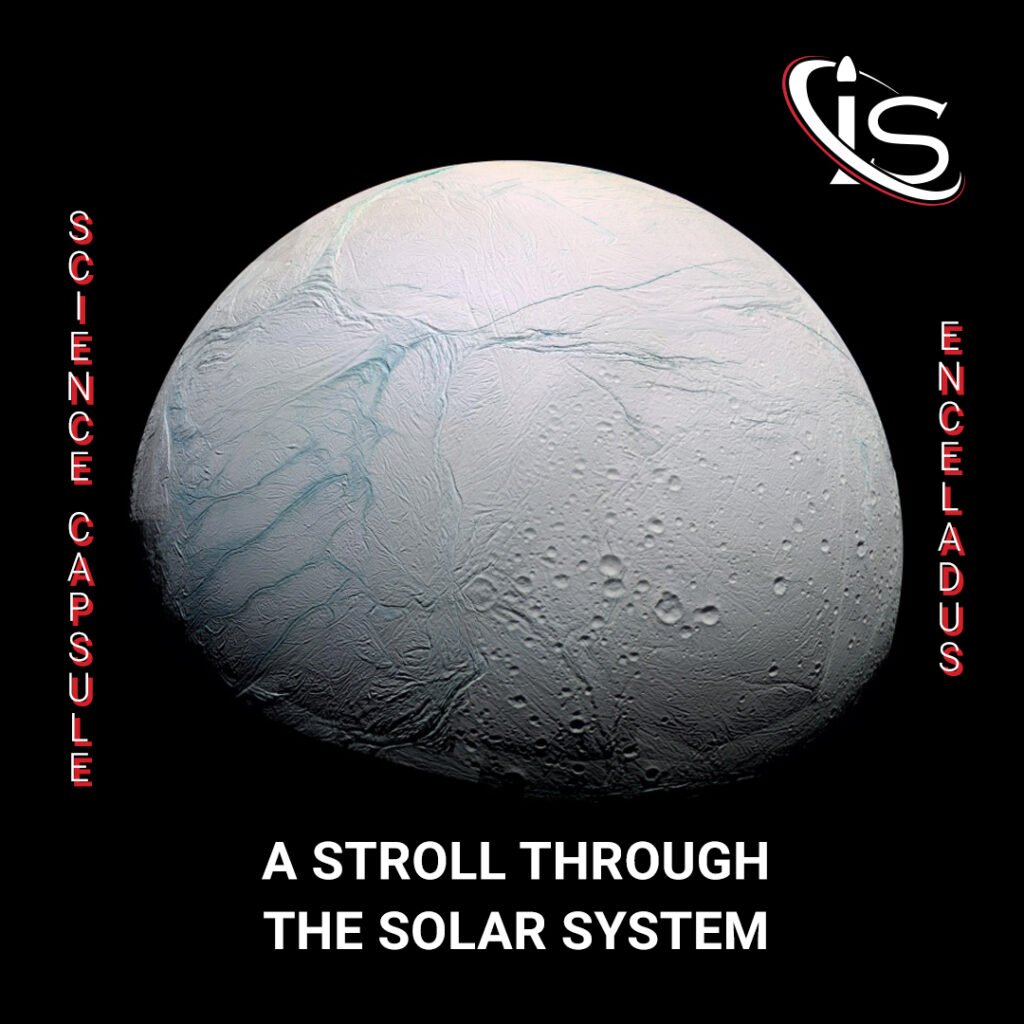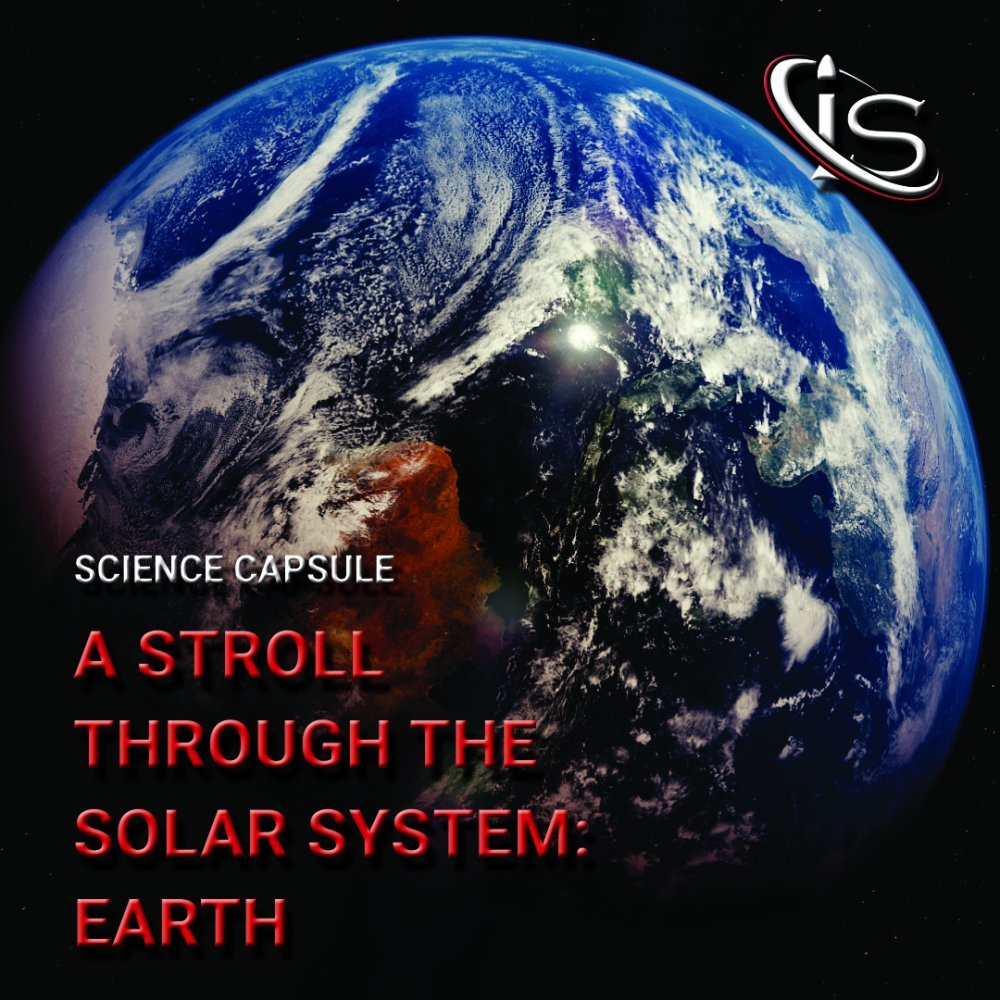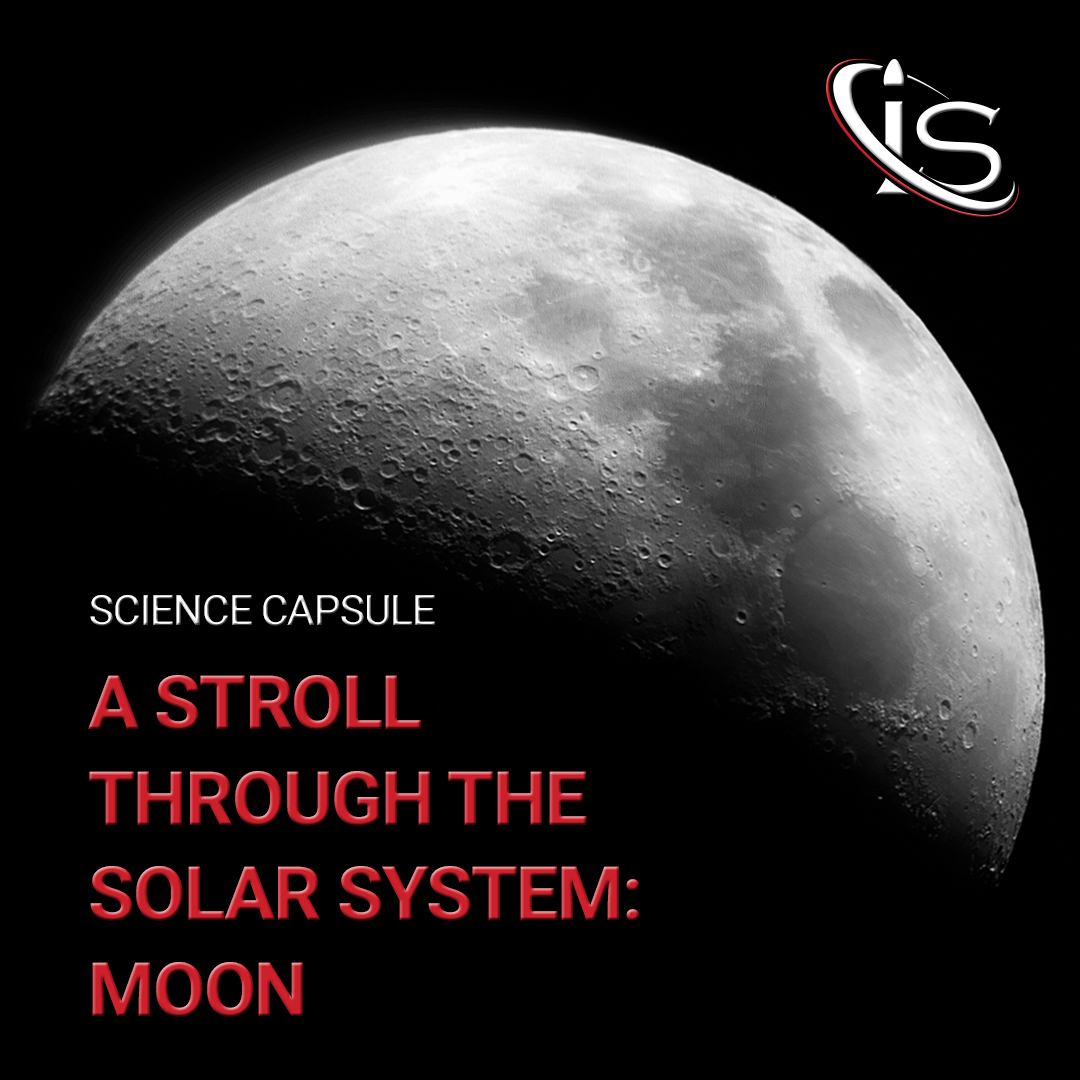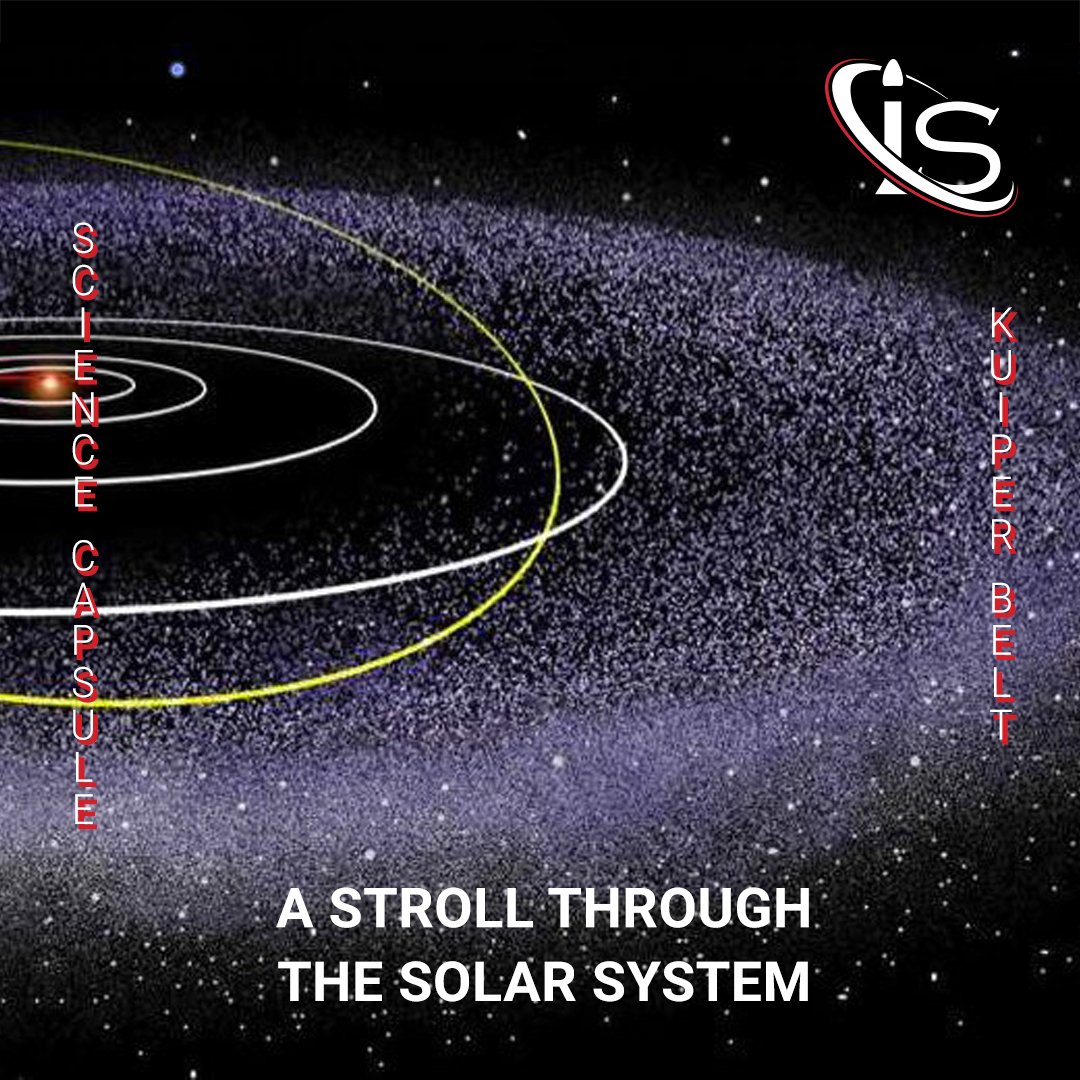Welcome back to another installment of everyone’s favorite planetary series. Last time, we tackled the Kuiper Belt, a fascinating region on the edge of the Solar System, which is host to many unique — and quite small — objects. Today, we take a step back towards the Sun, by exploring the icy world of Saturn’s most interesting moon, Enceladus. There is a lot to discuss — including an upcoming mission to this very spot — so let’s dive right in (you will get this pun momentarily).

Size and Orbit
As always, let’s start this stroll off by talking about this moon’s size. With a radius of only 500 km, Enceladus is practically only as wide as the US state, Arizona. That makes it a somewhat small moon. However, that is not necessarily too surprising. After all, a lot of the smaller objects in the Solar System are closer to the edge of it. In fact, even though it may be small from an absolute perspective, it is still the 6th largest moon orbiting Saturn.
As for its distance to its planet, Enceladus sits at 238,000 km from Saturn. It also takes 32.9 hours to complete an orbit around the gas giant. Needless to say, its distance from the Sun is the same as that of Saturn, 9.5 AU (Astronomical Units). Enceladus is also tidally locked to its planet, meaning the same face of it will always be pointing towards Saturn.
The Return of Orbital Resonance
For long time readers of this blog, the concept of orbital resonance should sound familiar. After all, three of Jupiter’s Galilean Moons — which we have discussed in the past — experience this same phenomenon. As this has been discussed in the past, I will not go in depth on this topic, here. However, if you would like to learn more about it, you can check out the stroll on Ganymede. Still, the general idea is that for every two orbits Enceladus completes, another of Saturn’s moons, Dione, completes one.
The main effect of this phenomenon is that Enceladus’s orbit is stretched into an elliptical shape. Therefore, this moon’s distance to Saturn does not stay constant throughout. Furthermore, the orbital resonance causes tidal heating on Enceladus, not unlike what is seen on the Galilean moon, Io. Although, it is nowhere near as extreme as what the Jovian moon experiences.
A Reflective Surface
Another thing that sets this moon apart from other objects is that its surface is the most reflective of the entire Solar System. This is what gives Enceladus its signature white look. It, also, causes its surface temperature to be rather frigid, coming in at approximately -201°C. However, this can be a bit misleading, as Enceladus is not the cold, inactive place it might initially appear to be.
In fact, the craters on this moon suggest that some tectonic activity might be currently ongoing. While some of these craters are very large — reaching up to 35 km in diameter — there are regions on this moon that are almost devoid of them. In particular, the region that possesses this feature most prominently is that of Enceladus’s South Pole. Furthermore, it’s these areas with little to no impact craters that suggest Saturn’s moon might be geologically active. After all, the only way to replace a crater with even terrain is to create new surface.
Enceladus’s Potential for Life
It is now time to get to the most important aspect of this moon, its potential for life. And while some of that has to do with the energy that appears to be underneath Enceladus’s crust, the main feature scientists are looking into is this satellite’s ocean. Now, there are other objects in the Solar System (outside of our own Earth) with the potential for vast oceans. However, none are as likely to possess this trait as Enceladus. In fact, as opposed to another moon with a similarly promising environment for sustaining life, like Europa, Enceladus’s chances of having an underground ocean are basically guaranteed.
That is because this moon is constantly shooting out jets of icy water and gas from its surface. These jets were first discovered by NASA’s spacecraft, Cassini, in 2005, and have garnered a lot of attention since then. Reaching speeds of up to 400 m/s, Enceladus’s jets form a massive halo of ice particles around the moon. Some of these end up leaving the satellite and becoming part of Saturn’s E ring. However, most fall back to the surface in the form of snow. And, as snow has a really high albedo, this is one of the contributing factors to keeping Enceladus’s surface so white.
All About the Jets
These jets originate from Enceladus’s “tiger stripes”, which are small fractures in the moon’s surface. And while water vapor is one of the gases present in the plume’s envelope, it is far from the only one. Methane, carbon dioxide, and a little ammonia are all found here, with either nitrogen gas or carbon monoxide also being present. To top it off, salts and silica are part of this, as well. As if all this were not enough, the concentration of organic material in the plume is also much higher than expected.
Now that we know what makes up these jets, it is time to talk about what exactly their scientific significance is. Before, I mentioned how they basically confirmed the existence of a subterranean ocean on Enceladus. However, I never said exactly why that is. While the actual process as a whole is relatively complex, it can still be broken down into its main components. Those being: gravitational measurements based on the Doppler Effect — the phenomenon where waves will appear to have varying frequencies based on their direction and speed of travel; and Enceladus’s small wobble as it travels around Saturn.
Thanks to the studying of this data, scientists were able to determine that these jets must originate from some type of underground ocean. This ocean would be located underneath the icy shell of Enceladus. A shell which might be as thin as 1-5 km around the South Pole. Although, its average thickness is believed to be closer to the 20-25 km range.
A Real Chance for Life
And now, we can tie all this information back into the main interest that surrounds this moon: its potential for life. As we saw before, part of the material shot out by Enceladus’s jets goes on to form the E ring. This means that any sample taken from this region is also a sample of Enceladus’s ocean. And one of the more interesting discoveries made so far is the presence of silica. This is one of the materials that was mentioned before in the jet composition. The reason it is so significant, however, is that it can only be produced at temperatures of about 200°C when rock and water come into contact. Given Enceladus’s freezing surface temperatures, this discovery would suggest the presence of hydrothermal vents under this moon’s icy shell. Something that can be found on the floor of our very own oceans.
Furthermore, as long-time readers might recall from Europa’s stroll, water and rock coming together in systems of high energy seems to be key to creating an environment suitable for life. But whereas the presence of such conditions on Europa is not certain, that is not the case for Enceladus. Or, at least, it does not appear to be. Meaning, that out of all the places that we have studied outside of Earth, so far, this small moon might prove to be the one most likely to host life.
Space Ocean Corp.
And now, as promised, we will discuss an upcoming mission to this very moon. Although, the scope of Space Ocean Corp. goes beyond just Enceladus. In fact, this company is in the process of organizing missions that will enable the collection of large amounts of water from across space.
According to their CEO, Paul S Mamakos, “They aim to accomplish this by establishing “oasis” in space, inspiring, sustaining, and expanding humanity’s presence in space as it moves through the solar system and beyond.” Space Ocean Corp. has the goal to “prospect, harvest, and distribute in situ water from major water sources, whether liquid, solid, or vapor, on various celestial bodies in the solar system.”
Their first mission will be centered around Enceladus and is expected to happen between 2028 and 2030. The goal for it is to collect between 15,000 and 100,000 gallons of water, with the end of the mission being targeted in 2039. While there is still a lot of work to do for this vision to become a reality, the scope and objective of this mission make Space Ocean a company that we should all keep an eye on.
Mythological Origins
I hope none of you thought we were going to end this stroll without this section. Nope, this is my favorite segment for a reason, and I am not going to skip it. Unless it is a Kuiper Belt situation, where the name does not have any mythological origins to begin with. So, without further ado, let us get into Enceladus’s story. And as is often the case with Greco-Roman mythology, reader discretion is advised.
Enceladus is one of the giants, who were the offspring of Gaia and Uranus. However, the way he was conceived is both disgusting and… puzzling, to say the least. According to myth, Enceladus was born from the blood of Uranus (the embodiment of the sky) that fell onto Gaia (the embodiment of the Earth) after Cronos castrated him. Yeah. Do not have anything to say here. Other than this makes no sense for so many reasons and is probably one of the grossest births in the cornucopia of gross births that is Greco-Roman mythology.
To add insult to injury, the planet Enceladus is orbiting, Saturn, is named after Cronos. Or at least the Roman version of the titan. Not only does that seem weirdly cruel, but it also does not really make sense. Even though these words may be synonyms in English, titans and giants are two very distinct groups in mythology. At least, Enceladus can take comfort in the fact it had to be beaten by arguably Olympus’s best fighter, Athena.
Nearing the End
As I said in the last stroll, this series is slowly coming to an end. And while there may be a couple entries left, the feeling of nostalgia is already starting to hit me. Fret not, however, as we have a lot of other fun capsules in store. So, even though these strolls may be ending soon, our content is not. And speaking of, make sure to tune into next week’s capsule, on Wednesday, right here at impulso.space.





